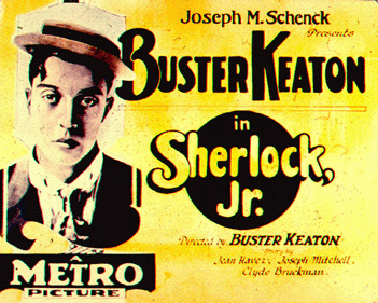Dream On: Freud and Moving Pictures
 |
 |
 |
New ideas and new media permeated 1920s America. In 1909, for example, the father of psychoanlysis, Sigmund Freud, journeyed to America to lecture on his groundbreaking and highly controversial theories of psychoanalysis. Among his lecture stops was Clark University in Worcester, Massachusetts. Equally revolutionary was the burgeoning film business which, by early in the decade, was the fourth largest industry in the country.
The purpose of this assignment is to bring these two cultural forces together in an attempt to better understand the era, in particular ideas about representation, fantasy and self. First, read the sections on discplacement and condensation in Sigmund Freud, The Interpretation of Dreams (3rd ediiton, 1911, Translated by A. A. Brill). Next, apply these ideas to comedian Buster Keaton's 1924 silent classic, "Sherlock, Jr." and the 1931 Betty Boop cartoon, "Minnie the Moocher" . You may want to listen to Cab Calloway's signature recording of the cartoon's central song (click here) and read its lyrics.
How is the medium of film itself represented?
What is the role of fantasy and imagination in each?
What does "Minnie" tell us about jazz?
What issue arise in these films reflect concerns of the era? class? race? sex? gender?
Additional Resources: